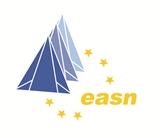July 23rd, 2013
EASN chairman met with the EC officers Remy Denos, Michael Kyriakopoulos, Marco Brusati as well as with the Head of Aeronautics Unit, Tiit Jurimae and Director Manuela Soares in Brussels on June 7th, 2013.
The main objectives of the meetings were to present the academia viewpoint and exchange views on issues dealing with research activities in HORIZON 2020, as well as to present the Academia viewpoint on "Clean Sky II" and common calls with non-EU memebrs (e.g. Ukraine, China, Russia etc).
In more detail and as for Horizon 2020, the following main points have been underlined:
- Success rates of some FP7 calls concerning L1 proposals were on the limit of non-acceptable, resulting to excellent proposals not being funded. Annual budget for Aeronautics in the frame of H2020 should appreciably exceed the respective budget of FP7.
- The 50-50 split among Aeronautics and Surface Transport research is proposed to be retained.
- EASN is in agreement with the principle of four different levels of projects.
- Since the introduction of L3 projects (JTIs), there has been a major shift of budget from research aiming to promote innovation and breakthrough technologies (L0 and L1 appx 25%) to research focused on implementation and integration (L2 and L3 appx 75%).
- EASN considers the development of new innovative technologies as an urgent need for the European Aeronautics in order to retain its global leadership. This aim is better served through the exploitation of the L0 and L1 tools, therefore a 70-30 split among L0/L1 and L2 is recommended.
- The need for a better definition of ?breakthrough? and ?radical? projects which fit to the L0 tool is needed, as there has often been a confusion on this issue.
- L0, L1 and L2 projects should be open in all calls.
- All topics should be open to L1 proposals.
- Lack or minimal Industrial participation should not be additionally penalised in L0 and L1 proposals, as the adequacy of the consortium is already a criterion.
- Scientific excellence should be the decisive criterion for a successful L1 proposal, achieved either by a higher threshold (e.g. 4) or more weight of the respective score.
Emphasis was also given to Clean Sky II and the following points were made:
- An important role of the Academia could be to provide validated tools to be used by the industry in the design of demonstrators or validate the tools currently being used by the industry. This can be supported by clusters, having the status of Associated partners.
- For the creation of clusters, a duly sighed cooperation agreement between the members should be sufficient, as in L1 and L2 projects.
- In addition, the existence of specialised researchers and infrastructure throughout the European Universities should be better exploited.
- EASN could support this by suggesting Universities and labs based on specific needs.
- Deviations from usual FP7 processes should be kept to a minimum.
- Funding rules should coincide with the usual FP7 rules.
- A 60% overhead rate for Universities is requested.
- EASN should also have a role in the dissemination activities of CS2.
- The active participation in the CS governing board would provide the academia view on issues relevant to academia and also contribute on implementing the lessons learnt in the frame of Clean Sky.
Finally, with regards to the common calls with non-EU members, the EASN highlighted the following:
- Such initiatives are in principle welcome
- Cooperation with competitors or potential competitors makes more sense only if performed on a low TRL and mainly on the academic level (see CooperatEUS, SUNJET etc).
- The higher the TRL, the closer to the final product where in most cases Europe cannot be competitive when producing the same or similar products. European excellence is and should remain on high-tech.
Furthermore during the meetings EASN proposed and presented topics, which were identified following an open consultation process within the EASN members. It has been acknowledged that Universities are preferential partners when trying to establish bridges and communication routes with technologically advanced non-EU countries, as academia driven research is, as a rule, far from market applications and therefore with little or no industrial competition involved.
